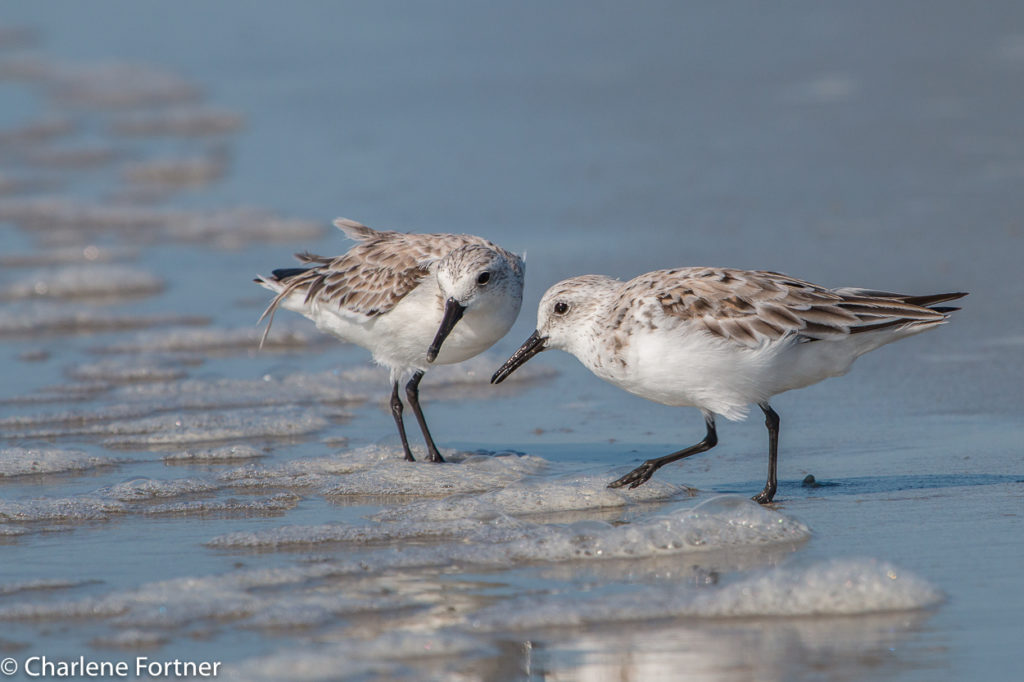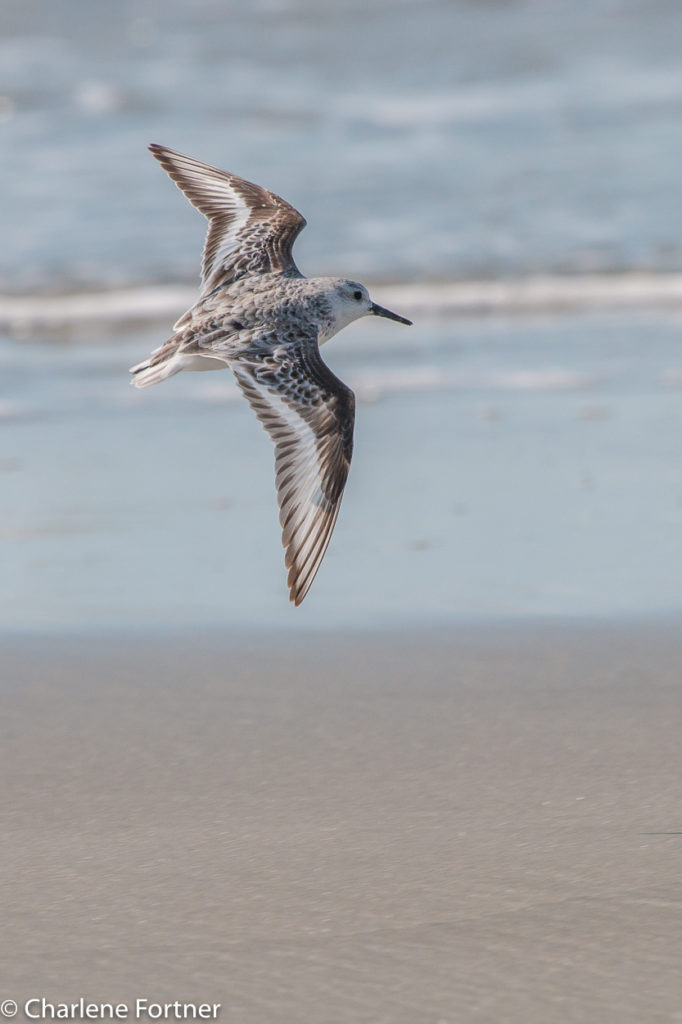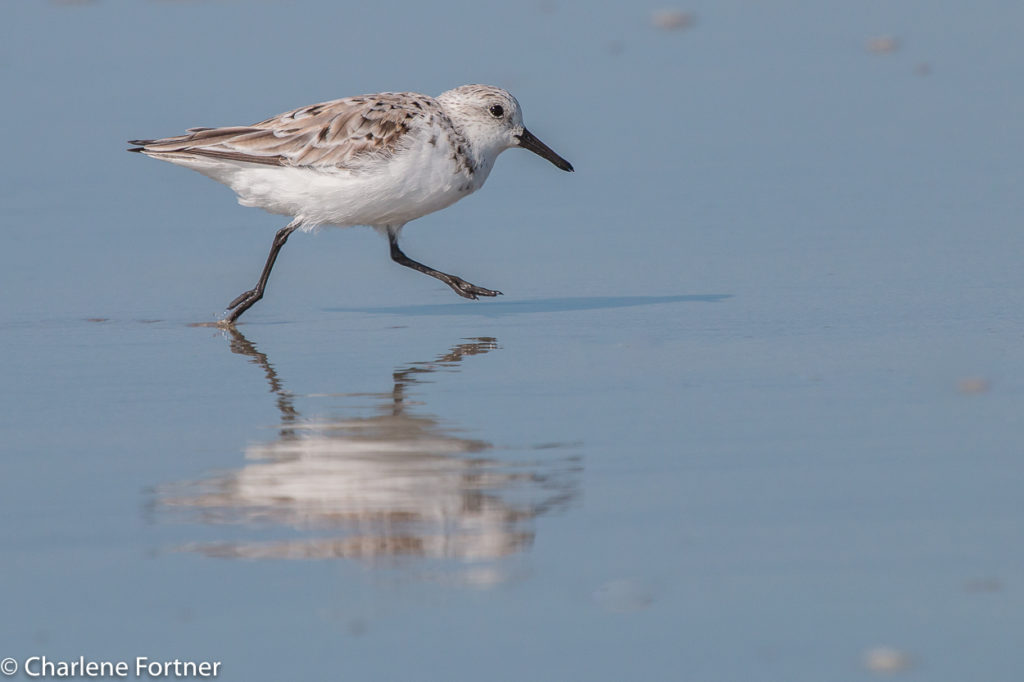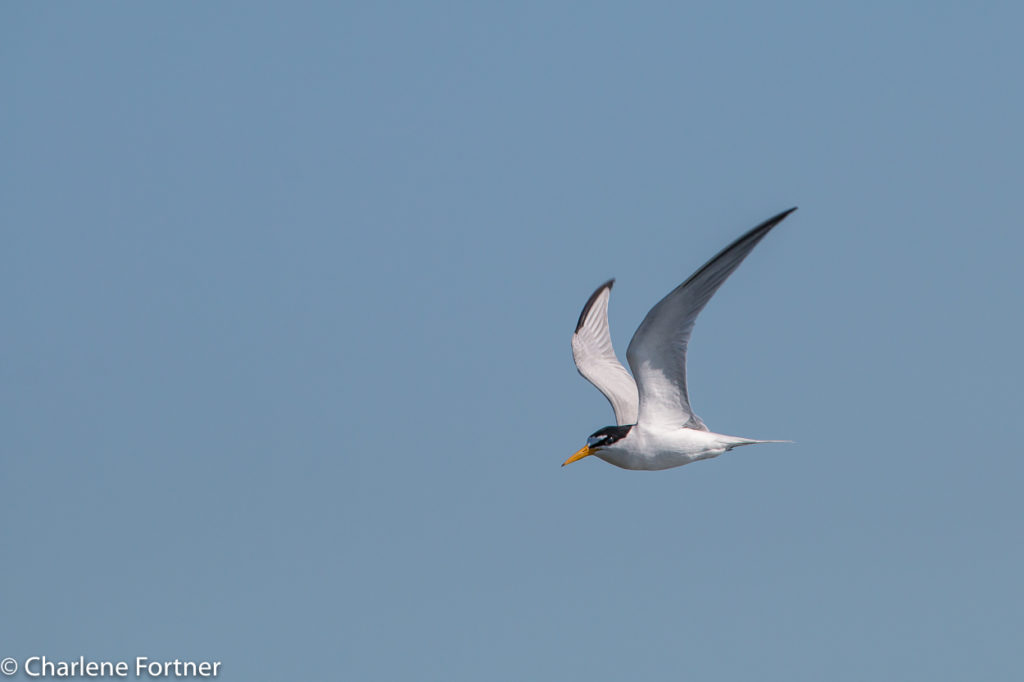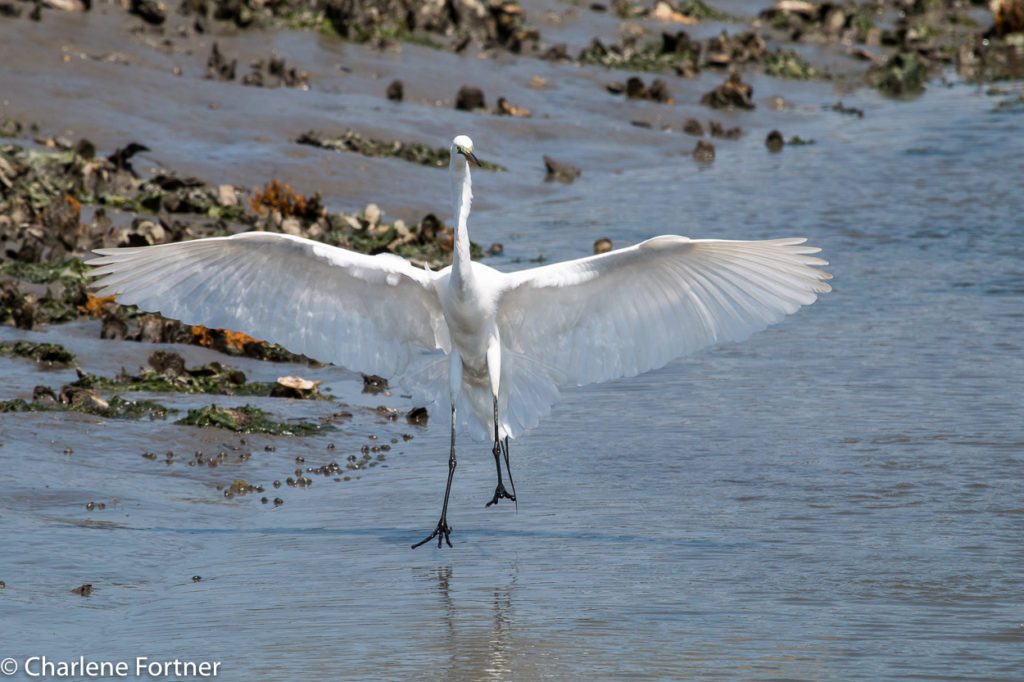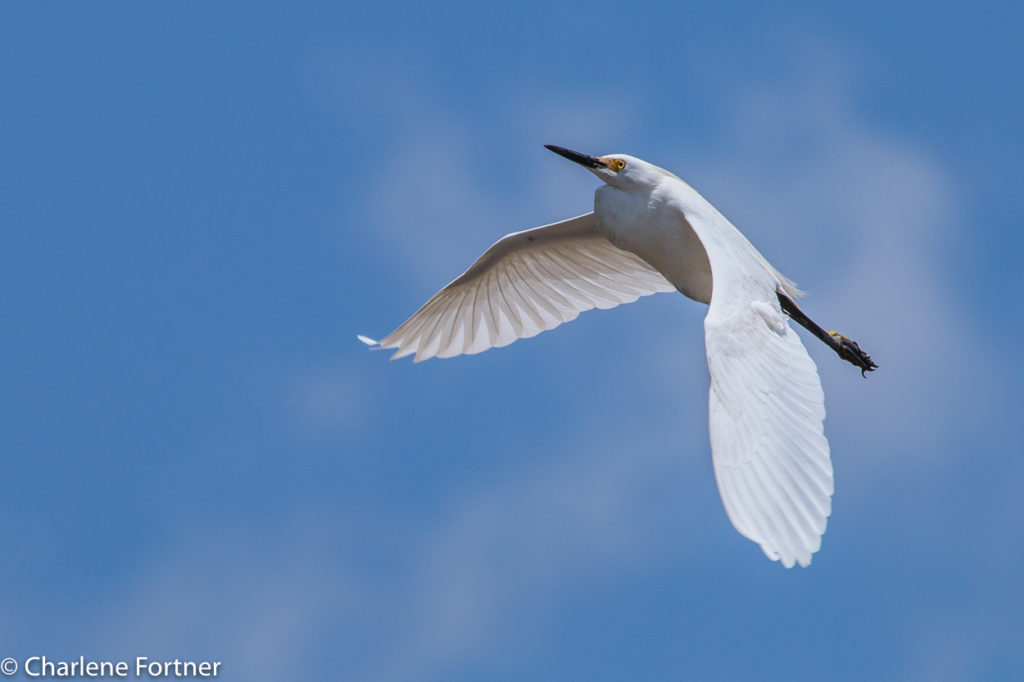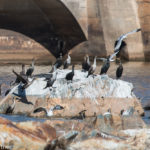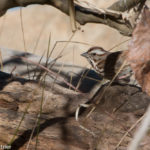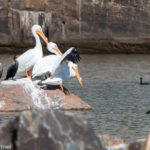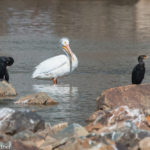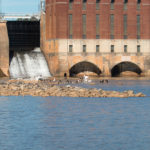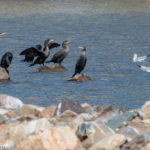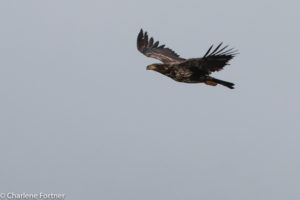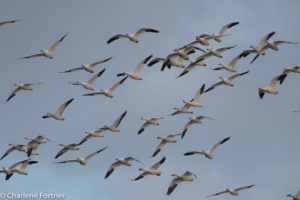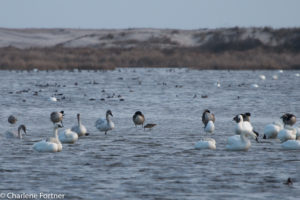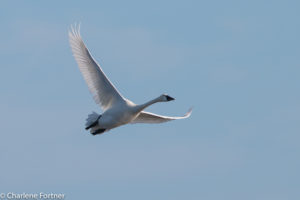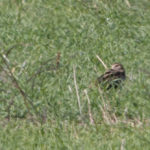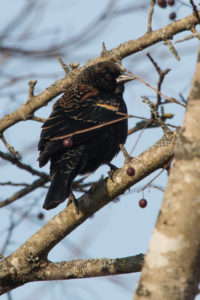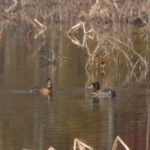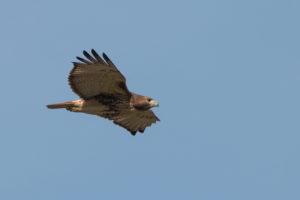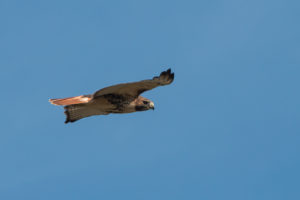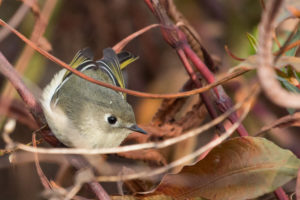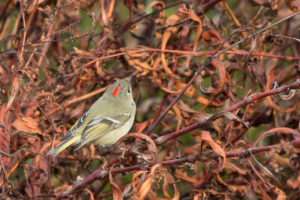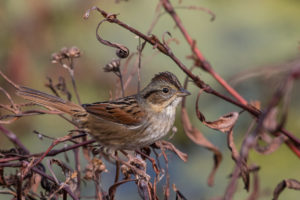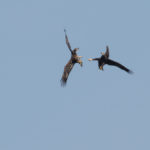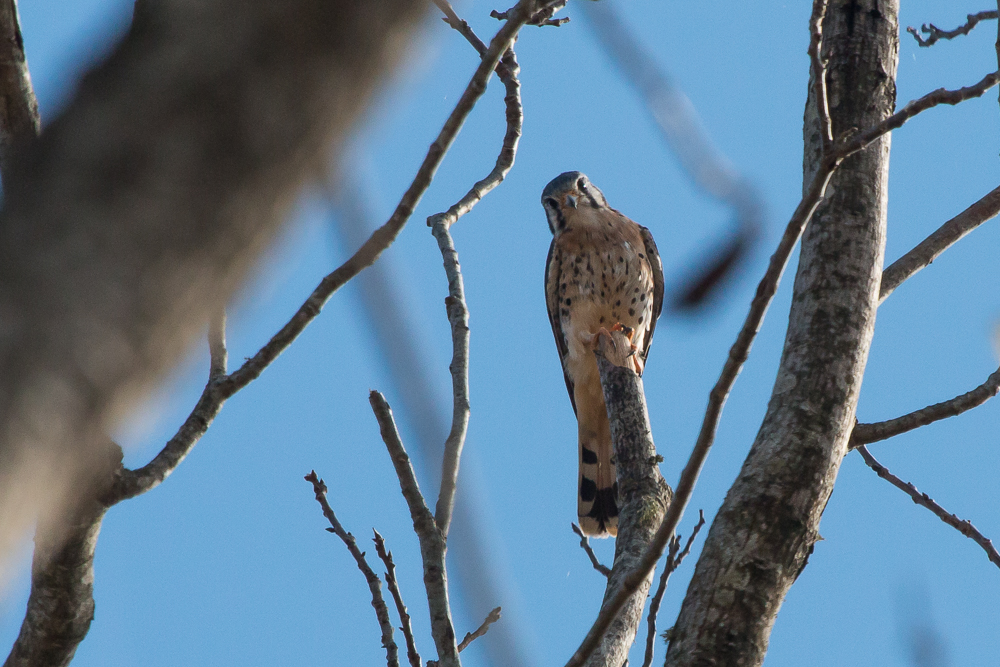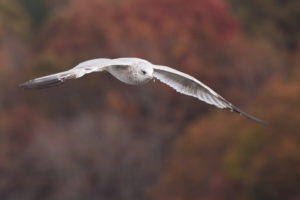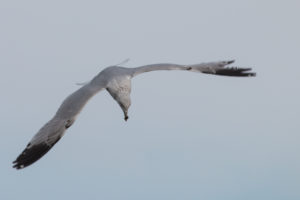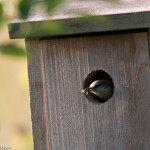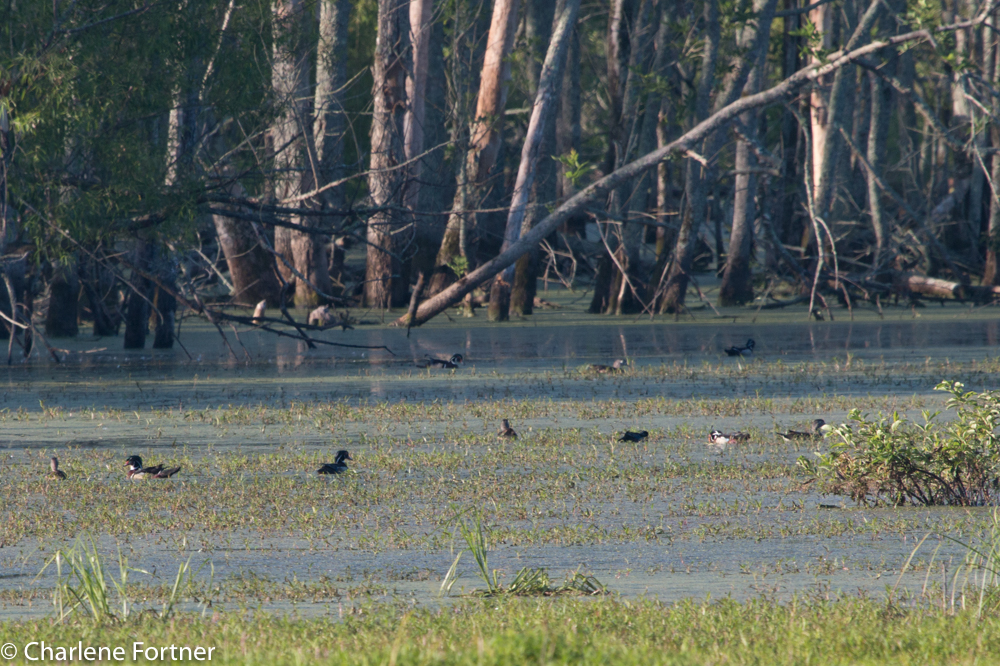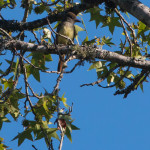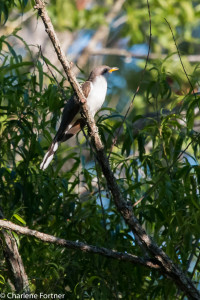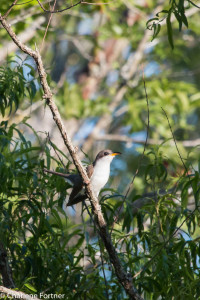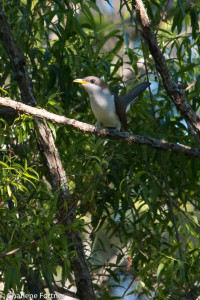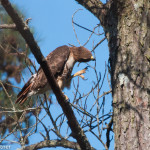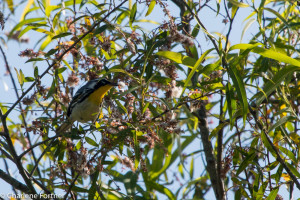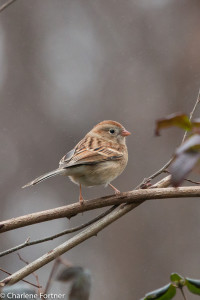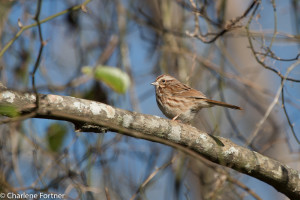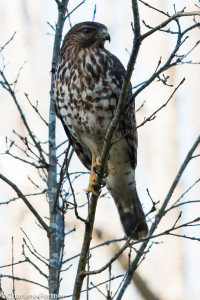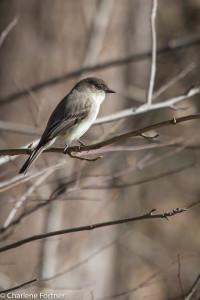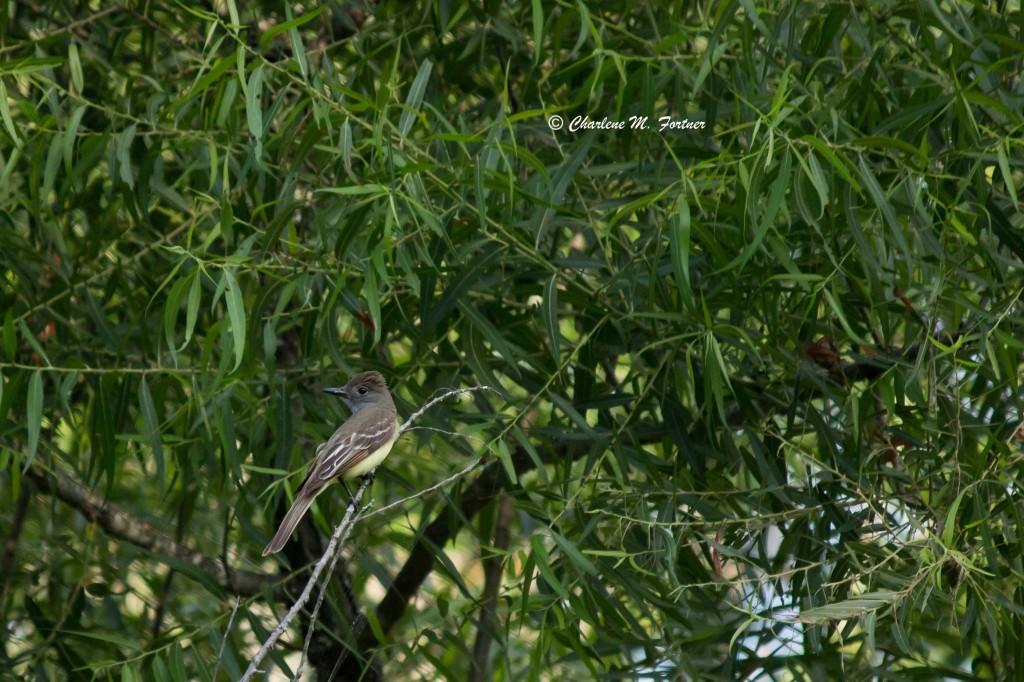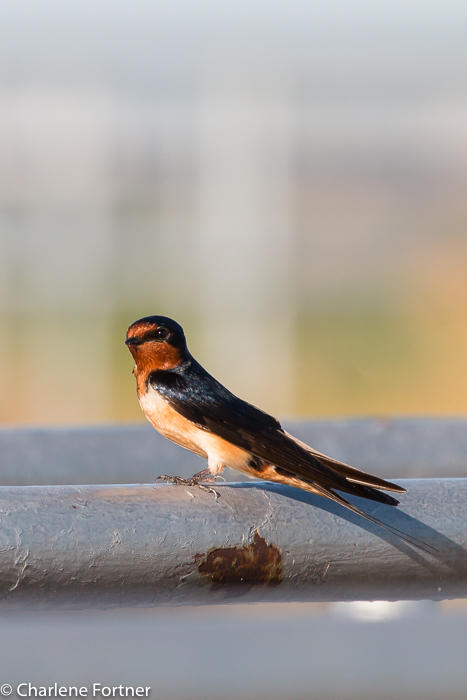Huntington Beach State Park
Just south of Myrtle Beach, Huntington Beach State Park is known as a great birding spot year-round. I can say that it did not disappoint!
Clicking on any of the photos in this post will enlarge them.
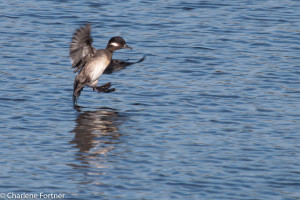
Bufflehead, female
We started out at the overlook and causeway. The first treat of the day were a pair of Buffleheads that came in for a landing near the overlook boardwalk. We also viewed several groups of dabbling ducks on the far reaches of the southern pond, dubbed the “Freshwater Lagoon” on the park map (or Mullet Pond on eBird). I spotted an American Wigeon mixed in with a flock of Gadwall. A small group of Double-crested Cormorants were resting on an island in the middle of the lagoon. How the island existed with all of the water and flooding in the area is beyond me. Several Pied-billed Grebes could be spotted coming up and promptly going back under in various locations.
Walking west along the causeway we saw several Red-winged Blackbirds. A female even came close to check me out!
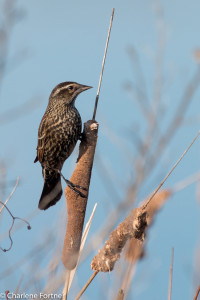
Red-winged Blackbird
Huntington Beach SP
Dec. 2015
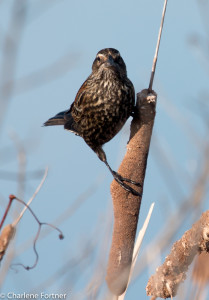
Red-winged Blackbird
Huntington Beach SP
Dec. 2015
Despite my (well-behaved) dog there were still many opportunities to view birds close up. The egrets did not seem in the least bit bothered by him. Continuing further down the causeway we observed several Boat-tailed Grackles. Small groups or pairs would perch atop the observation decks and along the low wooden fencing along the walkway. The photo below is one of my favorites from the day. Along the western reaches of the Freshwater Lagoon many egrets and herons rested in the trees. Among them, the normal cast of characters: Snowy Egrets, Great Egrets and Great Blue Herons. However, the personal highlight of the day were the 4 Wood Storks also in the trees. A gentleman explained to us that they sometimes have a few that overwinter at the park. The unusually warm winter allowed for a large number of the storks to stay later at the park this year with as many as 60-70 being seen in mid to late November. A lone Tricolored Heron was also spotted below the treeline in the grasses at the western edge of the pond. Singleton Forster’s Terns and cormorants frequently flew by and over during our walk.
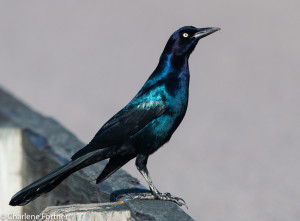
Boat-tailed Grackle
Huntington Beach SP
Dec. 2015
A small group of shorebirds was easily visible along the shoreline of the pond, but without binoculars I would have to rely on photo identification. I later determined that they were a mixture of Willets and Yellowlegs. I’m about 90% on that identification, the photo quality was poor due to the distance, but I was able to make inferences from overall size and bill shape/length comparisons.
Along the causeway to the north in the Saltwater Marsh we observed a lone male Hooded Merganser feeding and several cormorants.
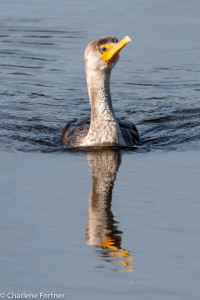
Double-crested Cormorant
Huntington Beach SP
Dec. 2015
Leaving the causeway area we traveled to the Education Center and walked along the boardwalk into the saltwater marsh. At nearly 80 degrees already at 11am, there was not much bird activity. Other birders on the boardwalk excitedly explained their observation of a Bald Eagle catching a heron! They allowed me to view the Bald Eagle through their scope. It was snacking on its prize in the trees to the west. I was also excited to observe a loon, later photo ID’d as a Common Loon. Like the grebes, always spending more time underwater than above it when I have my camera trained on the water!
Several Double-crested Cormorants were perched and sunning themselves on a wooden structure by the end of the boardwalk. Several Ring-billed Gulls were flying and landing around the boardwalk. One attempted to land on the platform occupied by the cormorants and a loud raucous ensued. On the bright side, despite the noise and the gull’s attempt ending in failure, I walked away with a very nice shot (below).

Ring-billed Gull
Huntington Beach SP
Dec. 2015
Next we ventured to the overlook at the north end of the Sandpiper Pond Nature Trail (presumably Sandpiper Pond?). Here we viewed several Pied-billed Grebes and three Ring-necked Ducks feeding in the pond.
For our final stop within the park we drove back to the Park Office and took a quick hike along the Kerrigan Nature Trail. The (beautiful) habitat along the trail was surprisingly quiet with little evidence of bird activity at the time. Perhaps at a different time of the day and without impending rain we may have had more luck spotting something. Mainly we got eaten by mosquitoes looking at nothing!
The trail ends at an Observation Deck on the southern end of the Freshwater Lagoon. I had hopes to see/hear Rails or a Sora, but instead we found a lone female Ruddy Duck hanging out with three female Buffleheads. It occurred to me that all day we only observed female Buffleheads, no males. An interesting anecdote, IMO. A male Belted Kingfisher appeared to be resting atop a wooden post on the west edge of the lagoon and a raft of Green-winged Teal were foraging on the southern end of the lagoon. An impending storm cut our trip short and we headed for home around noon.
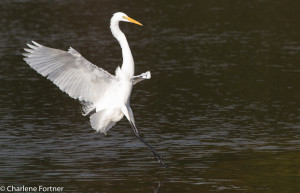
Great Egret
Huntington Beach SP
Dec. 2015
On a particularly warm December day we saw a total of 26 species in under two hours with little effort. With over 70 species reported for the day by other birders, the diversity of this park leaves me with the promise that I will return. Too bad the 4 hour one-way drive will keep me from making it a day-trip.
-+-+-+-+-+-+-+-+-+-+-+-+-+-+-+-+-+-+-+-+-+-+-+-+
As a side note, we stopped in-between downpours to do a quick run at Santee NWR – Cuddo Unit. While we didn’t thoroughly look as we passed through, this place has great promise and I also look forward to returning during better weather. Until then, I’ll leave it with this great photo from a moment of brief sunlight.
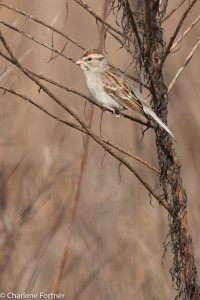
Chipping Sparrow
Santee NWR – Cuddo Unit
Dec. 2015
